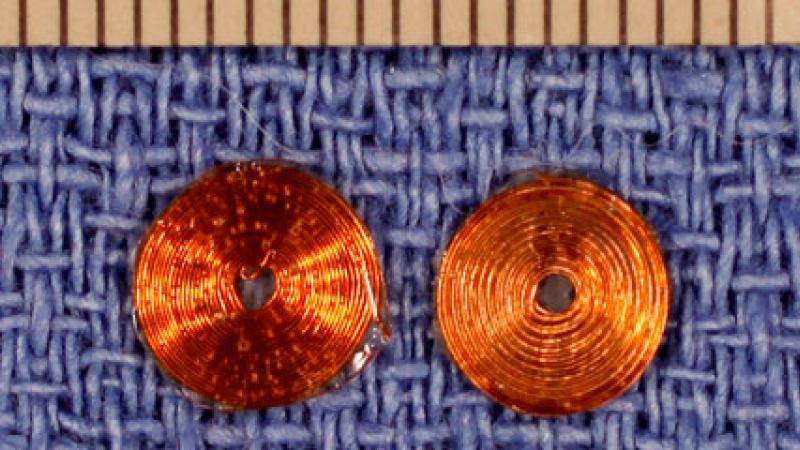Engineering Researchers Create Smart Sensors To Help Personalize Medicine by Wirelessly Transmitting Data From Orthopedic Surgery Site
February 21, 2012

A new implantable sensor developed at Rensselaer Polytechnic Institute can wirelessly transmit data from the site of a recent orthopedic surgery. Inexpensive to make and highly reliable, this new sensor holds the promise of more accurate, more cost-effective, and less invasive post-surgery monitoring and diagnosis.
Following an orthopedic procedure, surgeons usually rely on X-rays or MRIs to monitor the progress of their patient’s recovery. The new sensors, created by Rensselaer faculty researcher Eric Ledet, would instead give surgeons detailed, real-time information from the actual surgery site. This in vivo data could lead to more accurate assessments of a patient’s recovery, or provide better insight into potential complications.
The wireless sensor measures only 4 millimeters in diameter and 500 microns thick. It needs no battery, no external power, and requires no electronics within the body. Instead, the sensor is powered by the external device, which is also used to capture the sensor data.
“Our new sensor will give surgeons the opportunity to make personalized, highly detailed, and very objective diagnoses for individual patients,” said Ledet, assistant professor in the Department of Biomedical Engineering at Rensselaer. “The simplicity of the sensor is its greatest strength. The sensor is inexpensive to produce, requires no external power source, yet it is robust and durable. We are very excited about the potential of this new technology.”
The sensors look like small coils of wire and are attached to commonly used orthopedic musculoskeletal implants such as rods, plates, or prostheses. Once implanted in the in vivo environment, the sensor can monitor and transmit data about the load, strain, pressure, or temperature of the healing surgery site. The sensor is scalable, tunable, and easy to configure so that it may be incorporated into many different types of implantable orthopedic devices.
One key benefit of this new technology is the possibility of more accurate assessments by physicians for when recovering patients are able to return to work without a risk of further injury.
“Having a stream of real-time in vivo data should take some of the approximation and subjectivity out of declaring a patient recovered and ready to return to work,” Ledet said.
Ledet and his research team have filed for patent protection for their new sensor. They currently make each sensor by hand, but are investigating methods for mass production. Ledet has been working on this sensor technology for about five years, and has presented his progress at several conferences. His most recent presentation was earlier this month in San Francisco at the Orthopaedic Research Society (ORS) 2012 Annual Meeting.
Ledet, who earned his master’s and doctoral degrees from Rensselaer in 1995 and 2003, conducted this research in collaboration with colleagues at Albany Medical College. Ledet’s co-investigator on this project is Dr. Richard Uhl, who earned his bachelor’s degree from Rensselaer and is head of the Division of Orthopedic Surgery at Albany Medical College.
For additional information on Ledet’s research at Rensselaer, visit:
- Faculty Home Page
http://www.eng.rpi.edu/soe/index.php/faculty/154?soeid=ledete - Rensselaer Engineering Students To Visit South Africa and Help Innovate New Solutions to Unique Medical Challenges
http://news.rpi.edu/update.do?artcenterkey=2964